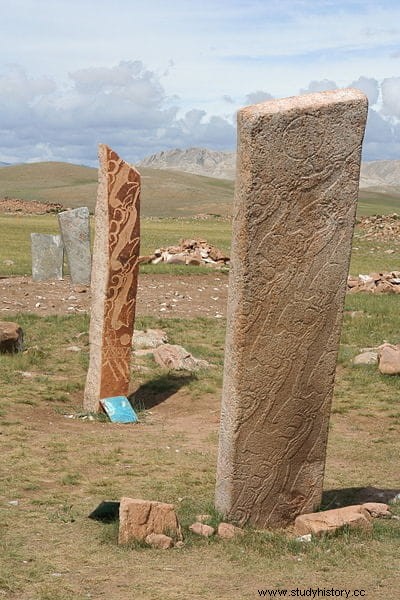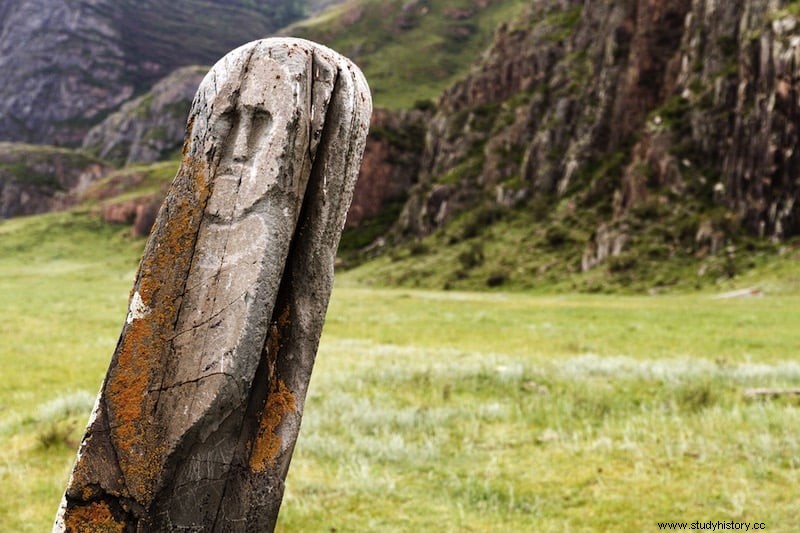In several places in Mongolia, and also in Siberia, there are some curious megaliths carved with symbols and figures. They are known as Reindeer Stones , because in many of them there are representations of what appear to be reindeer or flying deer . There are different theories about who created them and why, but at the moment none is definitive.
They are distributed throughout the northern grasslands of present-day Mongolia and southern Siberia. They are made of granite or the type of stone that abounds in the area, with a height ranging from approximately 1 meter for the smallest to 4 meters and a half for the largest.
They usually appear in groups of different sizes, usually associated with burial mounds called Khirigsuur and facing east.

Of the 900 that are known, 700 are in Mongolia. Specialists assign them an age of about 3,000 years , probably erected by Bronze Age nomads.
Due to the style of cut and the right angles of the carved motifs, it is believed that the reliefs were made with metal tools, while stone tools would be used to smooth the edges.
One of the things that surprises archaeologists is that, although the carvings were clearly done by hand, a few stones show signs that they could have been cut with some primitive type of mechanical drilling .
The oldest stones present very schematic images of deer or reindeer, whose detail increases over time. Thus, some 500 years later, the most modern stones already show flying reindeer rising above the ground and sometimes they even carry a sun disk between the antlers.

Sometimes they show warriors in whose torso the animal is represented . This association between reindeer and the sun was very common in Siberian shamanism. Similar tattoos have even been found on the remains of warriors at burial sites in the area.
One of the theories is that these images symbolize the passage from earthly to heavenly life, with reindeer protecting the deceased. Another theory affirms that the reindeer would be the guides that help the soul of the warrior to reach the sky.
The problem is that apart from reindeer and deer, many different animals appear on other stones. :tigers, pigs, cows, horses, frogs and birds, which are usually combined in pairs, and which do not seem to have much to do with the funerary aspect.

The simplest stones only present decorations of belts, necklaces, earrings, and even sometimes schematic human faces which are found almost exclusively at the top. They are depicted with their mouths open, as if they were singing.
Some stones with similar images appeared as far away as Burlgaria, the Czech Republic and Germany, which strengthens the hypothesis of their creation by nomads. All of them share an initial dating in the year 1000 BC. approximately, although researchers are cautious as many stones were reused by later cultures for their own burial mounds.

Some archaeologists believe that its origin is related to the Scythians, others that it would come from the Saces and their later branches. What they do seem to agree on is that they are not tombstones, since no human remains have been found, but of animals such as horses. It is therefore possible that they marked places of religious sacrifice.
In addition, some scholars such as William Fitzhugh believe that each stone is the representation of the body of a warrior or an important leader, a theory that is reinforced by the fact that they are all different, both in construction and decoration.
According to Fitzhugh this is because each stone tells the unique story of the individual it represents.
